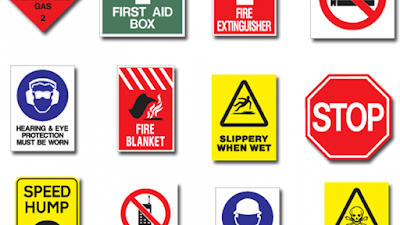The Art Of Product Label Printing: Design, Quality, And Impact
In the competitive world of product marketing, the art of product label printing plays a crucial role in capturing consumer attention and influencing purchasing decisions. The design, quality, and impact of product labels can make or break a brand's success. This introduction explores the multifaceted aspects of product label printing, highlighting the importance of thoughtful design, impeccable printing quality, and the lasting impact labels have on product perception and consumer engagement.
The Power of Visual AppealThe power of visual appeal cannot be underestimated when it comes to
designing eye-catching product labels. A well-designed label can captivate
consumers and leave a lasting impression.
It involves carefully considering color schemes, typography, imagery, and overall layout to create a visually striking label that stands out on the shelves.
The use of bold and unique design elements, coupled with clever branding strategies, can attract attention and spark curiosity.
A visually appealing label entices consumers to pick up the product, explore further, and ultimately make a purchasing decision, making it a vital aspect of successful product label printing.
Designing a
Memorable Label with Colors and Typography
Designing a memorable label requires careful consideration of colors
and typography. Colors evoke emotions and convey messages, making them a
powerful tool for capturing attention and creating brand recognition.
Choosing the right color scheme that aligns with the product and target audience is crucial. Typography, on the other hand, sets the tone and personality of the label.
The font style, size, and arrangement should be legible, cohesive with the overall design, and reflect the brand's identity.
By harmonizing colors and typography, a memorable label can be created that not only grabs attention but also communicates the essence of the product and leaves a lasting impression on consumers.
Choosing the Right
Substrates for Label Quality
The substrate, or material, used for printing labels plays a crucial
role in their durability, appearance, and performance.
Factors like label adhesion, resistance to moisture, UV exposure, and temperature variations should be considered when selecting substrates.
Options such as paper, vinyl, or film offer different characteristics that impact label quality. Additionally, factors like finish, texture, and thickness contribute to the overall look and feel of the label.
By carefully evaluating and selecting the appropriate substrates, label manufacturers can ensure that their products meet the desired quality standards and effectively represent the brand and its products.
Printing Techniques
for Impact: Embossing, Foiling, and More
Printing techniques have a significant impact on the visual appeal of product label printing. Techniques such
as embossing and foiling can elevate label design and create a sense of luxury
and prestige.
Embossing adds texture and depth to specific elements, making them visually stand out and inviting tactile exploration.
Foiling, on the other hand, adds a metallic sheen or reflective effect, enhancing the label's perceived value and catching the eye from different angles.
Other techniques like spot varnishing, die-cutting, and holographic effects offer unique opportunities for creativity and differentiation.
By incorporating these printing techniques, brands can create labels that command attention, convey quality, and leave a memorable impression on consumers.
Labeling Lawfully:
Regulatory and Compliance Considerations
Labeling laws vary across industries and regions, covering aspects
such as ingredient disclosure, nutritional information, allergen warnings, and
country-specific requirements.
Failure to comply with these regulations can result in legal consequences, damage to brand reputation, and a loss of consumer trust.
Ensuring accurate and transparent labeling requires thorough research, staying updated on evolving regulations, and working closely with legal experts.
By prioritizing regulatory compliance, brands can build credibility, demonstrate commitment to consumer safety, and navigate the complex landscape of product labeling with confidence.
Integrating Labels:
Brand Consistency and Identity
Labels should align seamlessly with other branding elements, such as
logos, colors, and typography, to create a cohesive visual experience.
Consistency in design elements helps consumers recognize and associate the label with the brand, fostering brand loyalty and trust.
By incorporating brand elements into the label design, such as using the brand's signature font or incorporating brand motifs, labels become a powerful tool for reinforcing brand identity and communicating brand values.
The integration of labels ensures a unified and impactful packaging design that resonates with consumers and strengthens brand recognition.
Label Durability:
Ensuring Quality and Longevity
Labels are subjected to various environmental conditions, such as
moisture, UV exposure, and handling, which can impact their appearance and
legibility over time.
Using durable materials, such as weather-resistant films or laminates, protects labels from fading, peeling, or tearing.
Additionally, employing advanced printing techniques like UV-resistant inks or coatings enhances label durability. Proper adhesive selection ensures labels stay securely affixed to packaging, even under challenging conditions.
By prioritizing label durability, brands can maintain a professional and polished image, ensuring that their products are well-represented throughout their lifespan and delivering a positive experience to consumers.
Labels and Buying
Behavior: Consumer Psychology Perspective
The visual elements, color schemes, and design aesthetics of labels
can influence consumer perceptions, emotions, and purchase decisions.
Labels that evoke positive emotions, align with consumer preferences, and convey product benefits are more likely to capture attention and generate interest.
Additionally, labels that provide clear and relevant information, such as product features or certifications, help consumers make informed choices.
By understanding consumer psychology and leveraging label design accordingly, brands can create labels that resonate with their target audience, foster positive associations, and ultimately drive purchasing behavior.
Conclusion
The art of product label printing encompasses the intricate balance between design, quality, and
impact. By prioritizing visual appeal, selecting the right substrates, and
employing effective printing techniques, labels can captivate consumers and
convey brand messaging. Compliance with regulations and maintaining brand
consistency further enhance the power of labels. Understanding consumer
psychology and considering label durability ensure long-lasting impressions.
Ultimately, mastering the art of product label printing leads to successful
branding, increased consumer engagement, and ultimately, business growth.




Comments
Post a Comment